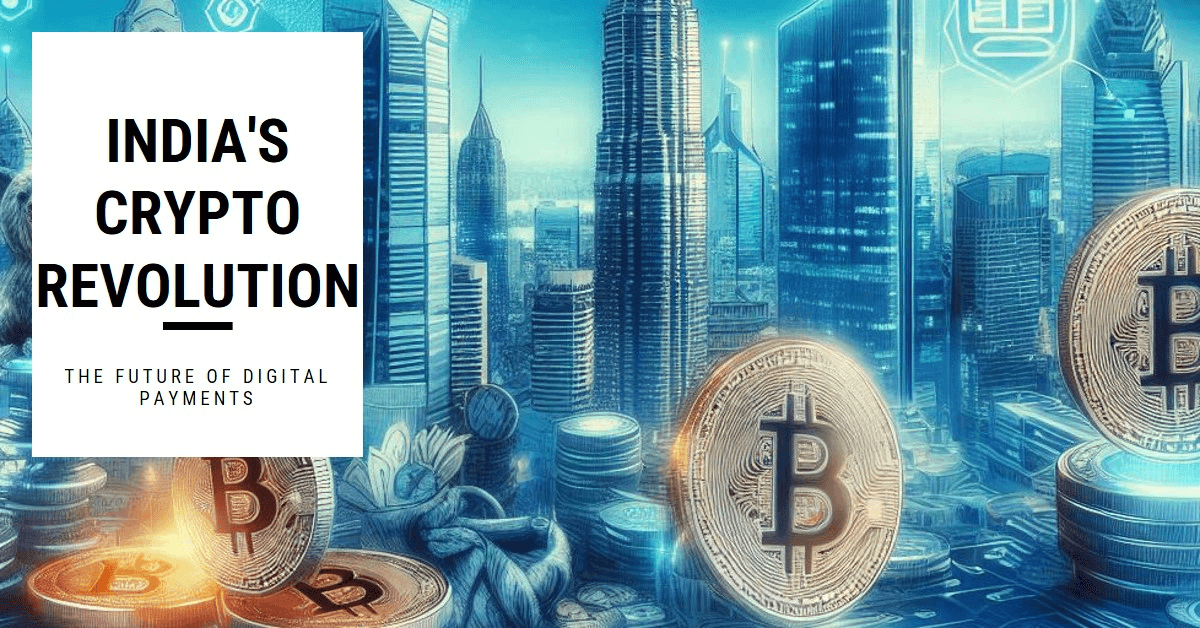India’s financial landscape is undergoing a radical transformation, driven by the rapid adoption of digital payment technologies. Among the most disruptive innovations are crypto and blockchain technology, which are redefining how transactions are conducted and managed. As India emerges as a global fintech leader, the country’s stance on cryptocurrency and blockchain has garnered significant attention. This article examines India’s evolving regulatory environment, the integration of these technologies into mainstream financial systems, and their potential impact on the future of digital payments.
The Rise of Cryptocurrency in India
Cryptocurrency, a digital or virtual currency that uses cryptography for security, has gained substantial traction in India over the past few years. Despite the volatility and regulatory uncertainties, India has become one of the largest markets for cryptocurrency trading, with millions of investors exploring digital assets such as Bitcoin, Ethereum, and other altcoins.
The appeal of cryptocurrencies lies in their potential for high returns, decentralized nature, and the ability to provide financial inclusion for unbanked populations. Platforms like WazirX, CoinDCX, and ZebPay have seen exponential growth, making it easier for Indians to buy, sell, and trade cryptocurrencies.
Regulatory Landscape: Navigating the Challenges
The Indian government and the Reserve Bank of India (RBI) have had a cautious approach towards cryptocurrency. In 2018, the RBI imposed a banking ban on cryptocurrency transactions, citing risks related to fraud, money laundering, and financial stability. However, in a landmark ruling in 2020, the Supreme Court of India lifted the ban, providing a major boost to the crypto industry.
Since then, the regulatory environment has continued to evolve. The government is reportedly working on a cryptocurrency bill that aims to provide a legal framework for digital currencies while also considering the launch of a Central Bank Digital Currency (CBDC). The proposed bill is expected to address key issues such as consumer protection, taxation, and compliance requirements for crypto exchanges.
For more in-depth analysis on India’s cryptocurrency regulations, check out Epic Infinite’s article on cryptocurrency regulations.
Blockchain: Beyond Cryptocurrency

While cryptocurrency often dominates the headlines, blockchain technology—the underlying technology behind cryptocurrencies—holds even greater potential for revolutionizing various sectors in India. Blockchain is a distributed ledger technology that ensures transparency, security, and immutability of records, making it ideal for applications beyond digital currencies.
In the financial sector, blockchain is being leveraged for a variety of use cases, including cross-border payments, smart contracts, and fraud prevention. For instance, ICICI Bank and HDFC Bank have implemented blockchain solutions to streamline trade finance and cross-border transactions, reducing the time and costs associated with traditional banking processes.
Moreover, blockchain’s ability to create secure and transparent records is being explored in sectors like supply chain management, healthcare, and public services. Government initiatives such as the IndiaChain project are aimed at developing a nationwide blockchain infrastructure to enhance efficiency and reduce corruption in public administration.
Integration into Mainstream Financial Systems
The integration of cryptocurrency and blockchain into mainstream financial systems in India is still in its nascent stages but is rapidly gaining momentum. Payment gateways like Razorpay and Paytm have started exploring blockchain-based solutions to enhance transaction security and efficiency. Additionally, several Indian startups are at the forefront of blockchain innovation, developing solutions that address pain points in the traditional financial system.
One notable example is Matic Network (now known as Polygon), a blockchain scalability platform that has gained international recognition for providing faster and cheaper transactions on Ethereum, one of the most popular blockchain networks globally. By addressing scalability issues, platforms like Polygon are making blockchain more accessible and practical for everyday use.
The Future of Digital Payments in India
The growing adoption of cryptocurrency and blockchain is poised to reshape India’s digital payment ecosystem. As regulatory clarity improves and more financial institutions embrace these technologies, the use of digital currencies and blockchain-based solutions is expected to become more mainstream.
However, challenges remain. The volatility of cryptocurrencies, regulatory uncertainties, and concerns over security and fraud are significant hurdles that need to be addressed. Additionally, public awareness and education are crucial for driving widespread adoption and ensuring that these technologies are used responsibly.
Looking ahead, the potential launch of India’s own CBDC could further accelerate the integration of blockchain into the financial system. A digital rupee would not only provide a regulated alternative to private cryptocurrencies but also enable more efficient and transparent financial transactions.
Conclusion
India’s growing adoption of cryptocurrency and blockchain technology represents a new age of digital payments, characterized by innovation, decentralization, and increased financial inclusion. While the regulatory landscape is still evolving, the progress made so far indicates a promising future where digital currencies and blockchain solutions play a pivotal role in the country’s financial ecosystem.
For more insights on how digital payments are transforming industries, visit Epic Infinite where we explore the latest trends in fintech, blockchain, and their impact on global markets. Discover how technology is driving change and what it means for the future of finance.










